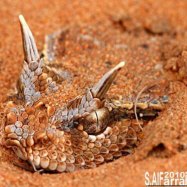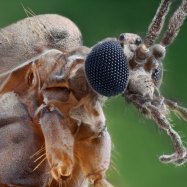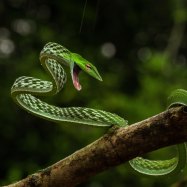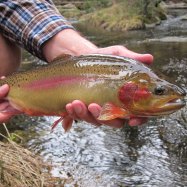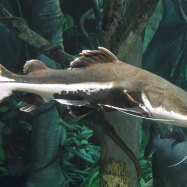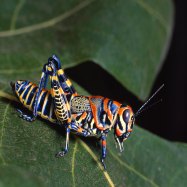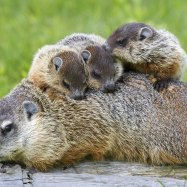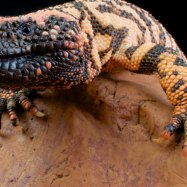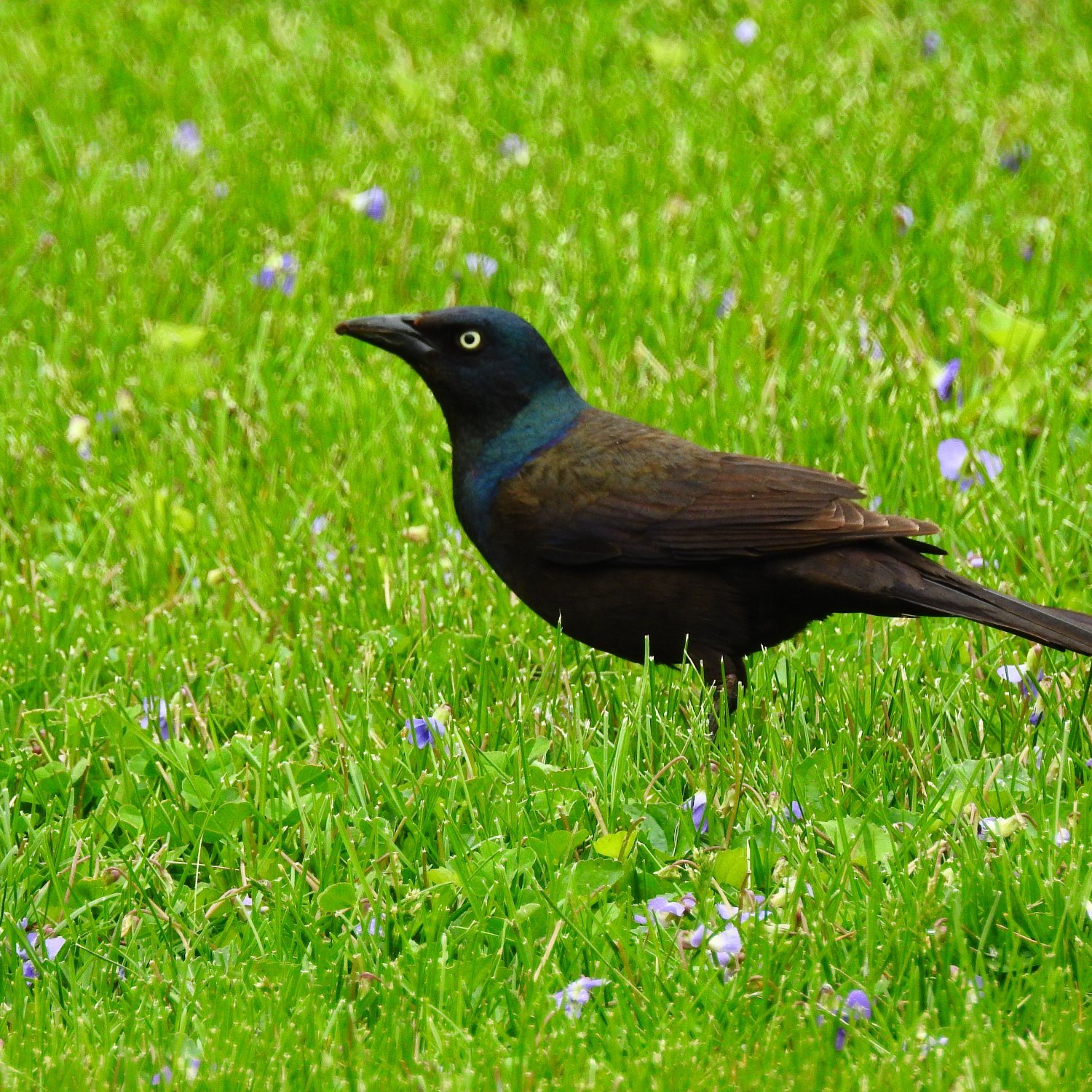
Common Grackle
28-34 cm (11-13 in)
The Common Grackle, a medium-sized bird with a long tail, can be found in the eastern and central parts of North America. Belonging to the Icteridae family, these birds measure around 28-34 cm in length and are known for their loud, high-pitched calls. Keep an eye out for these iconic feathered creatures on your next nature walk! #BirdWatching #NorthAmericanBirds #Grackle #Icteridae
Animal Details Summary:
Common Name: Common Grackle
Kingdom: Animalia
Habitat: Woodlands, parks, and suburban areas
The Fascinating World of the Common Grackle: A Master of Adaptability
Have you ever spotted a striking black bird with vibrant blue and purple hues in your backyard or local park? Chances are, you are looking at a Common Grackle, one of North America's most widespread and intriguing bird species. From its unique appearance to its impressive adaptability, the Common Grackle is a creature worth learning more about in the world of Natural Language Processing.Introduction to the Common Grackle
Scientifically known as Quiscalus quiscula, the Common Grackle belongs to the Animalia kingdom, Chordata phylum, Aves class, and Passeriformes order. It is a member of the Icteridae family, which includes other blackbird species such as cowbirds and orioles Common Grackle. The Common Grackle is a medium-sized bird with a long tail, measuring 28-34 cm (11-13 in) in length.Habitat and Geographical Distribution
Due to its adaptability, the Common Grackle can thrive in various habitats, including woodlands, parks, and suburban areas. This bird species is native to North America, specifically the eastern and central parts, but can also be found in parts of Canada. The Common Grackle is considered a year-round resident in its range, with some birds choosing to migrate south during the winter months.Eating Habits
The Common Grackle is an omnivorous bird, meaning it feeds on both plant and animal matter. Its diet consists of a wide range of insects, berries, seeds, fruits, and small animals such as frogs, small birds, and rodents. Being a highly adaptable species, the Common Grackle has also adapted to eat human food scraps, making it a common visitor to backyard bird feeders.The Iridescent Beauty of the Common Grackle
What sets the Common Grackle apart from other blackbird species is its iridescent coloration. Adult males have glossy black feathers with a striking blue or purple sheen, while females have a more subdued brownish-black color Cave Lion. This iridescence is most prominent in direct sunlight, displaying a stunning array of colors that can hypnotize any observer.Mastering the Art of Mimicry
Apart from its remarkable coloration, the Common Grackle also stands out for its vocal abilities. This bird species is highly vocal, known for its loud and raucous calls, especially during its breeding season. What's even more impressive is its ability to mimic the calls of other birds and even some mammals, such as cats and dogs. This is yet another example of the Common Grackle's adaptability and intelligence.Adaptability at its Finest
Speaking of adaptability, the Common Grackle has evolved to thrive in human-altered landscapes. It is often found in urban and suburban areas, nesting in city parks, golf courses, and even parking lots. This species has also adapted to living among humans, taking advantage of artificial food sources and nesting in man-made structures such as buildings and telephone poles.Back from the Brink of Extinction
The Common Grackle's adaptability has also helped it survive and recover from near-extinction in the early 1900s. Heavy hunting and the loss of habitat due to urbanization posed a significant threat to this species. However, with conservation efforts and the bird's ability to adapt and thrive in new environments, the Common Grackle's population has rebounded, and it is now considered a species of least concern.The Role of Natural Language Processing in Studying Common Grackles
As technology continues to advance, scientists are finding new and innovative ways to study and understand animal species. One such technology that has shown promising results in studying Common Grackles is Natural Language Processing (NLP). NLP is a branch of artificial intelligence that focuses on how computers can understand, interpret, and generate human language. It has been used to analyze and interpret bird calls, including those of Common Grackles, to better understand their behavior and vocalizations.NLP has also been used to analyze large amounts of data collected from Common Grackle sightings and migrations to identify patterns and trends. This has helped researchers track changes in the bird's population and movements, providing valuable insights into its adaptability and survival.
Conclusion: A Remarkable and Adaptable Species
In conclusion, the Common Grackle is a fascinating bird with a unique combination of adaptability, intelligence, and beauty. From its striking iridescent coloration to its remarkable ability to thrive in various habitats, the Common Grackle has proven to be a master of adaptability. With the help of Natural Language Processing and other technologies, we continue to learn more about this bird species, its behaviors, and its vital role in the ecosystem. So, the next time you spot a Common Grackle in your backyard, take a moment to appreciate its remarkable qualities and remember that it is a true survivor in a constantly changing world.

Common Grackle
Animal Details Common Grackle - Scientific Name: Quiscalus quiscula
- Category: Animals C
- Scientific Name: Quiscalus quiscula
- Common Name: Common Grackle
- Kingdom: Animalia
- Phylum: Chordata
- Class: Aves
- Order: Passeriformes
- Family: Icteridae
- Habitat: Woodlands, parks, and suburban areas
- Feeding Method: Omnivorous
- Geographical Distribution: North America
- Country of Origin: United States
- Location: Eastern and central parts of North America
- Animal Coloration: Black with iridescent blue or purple hues
- Body Shape: Medium-sized with a long tail
- Length: 28-34 cm (11-13 in)
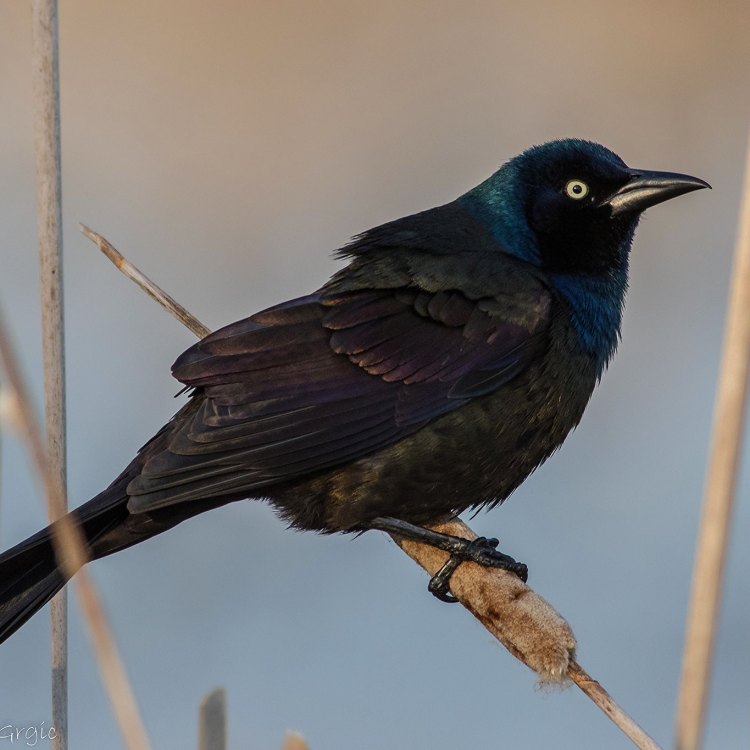
Common Grackle
- Adult Size: Medium-sized
- Average Lifespan: 6-8 years
- Reproduction: Sexual
- Reproductive Behavior: Monogamous
- Sound or Call: Harsh, croaking noises
- Migration Pattern: Short-distance migrant
- Social Groups: Flocks
- Behavior: Social and gregarious
- Threats: Habitat loss, pollution, predation
- Conservation Status: Least Concern
- Impact on Ecosystem: Seed disperser, insect control
- Human Use: Game bird, pest control
- Distinctive Features: Bright yellow eyes, glossy black feathers
- Interesting Facts: Known for their noisy calls and large flocks
- Predator: Birds of prey, snakes
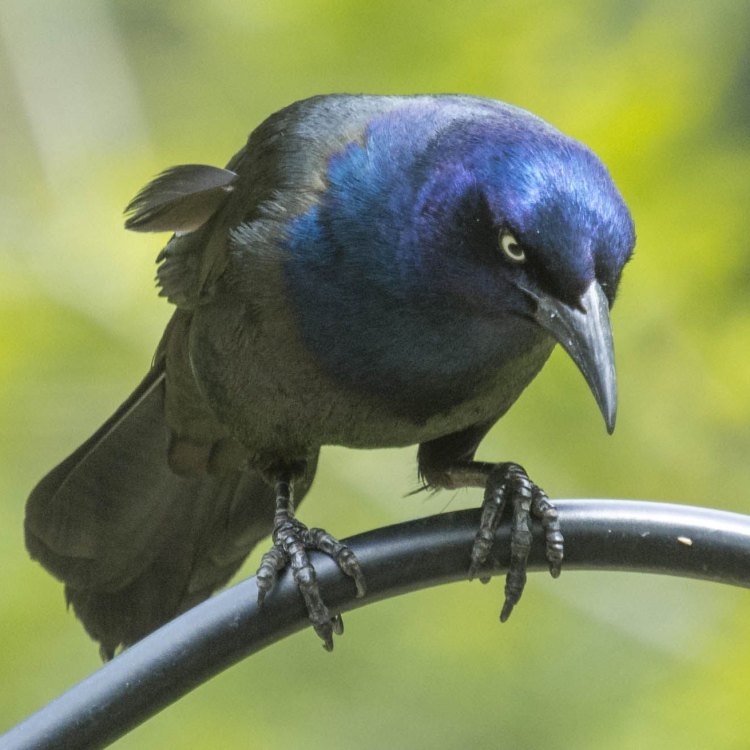
Quiscalus quiscula
The Fascinating World of the Common Grackle
The Common Grackle (Quiscalus quiscula) is a medium-sized bird that is native to North and Central America. With an average lifespan of 6-8 years, these birds are commonly found in various habitats such as forests, fields, and urban areas. They are known for their unique features, social behavior, and impact on the ecosystem. In this article, we will delve into the world of the Common Grackle and uncover its interesting facts, habitat, behavior, and threats PeaceOfAnimals.Com.The Look and Size of the Common Grackle
The Common Grackle is a medium-sized bird that measures around 13-14 inches in length and has a wingspan of 15-18 inches. They have a glossy black plumage, with a metallic or iridescent sheen on their head, neck, and chest. One of the most distinctive features of these birds is their bright yellow eyes, which stand out against their dark feathers. Female Common Grackles are slightly smaller than males and have a shorter, less pronounced tail.Lifespan and Reproduction
On average, Common Grackles have a lifespan of 6-8 years, although some have been known to live up to 12 years in the wild. These birds reach sexual maturity at around two years of age. During the breeding season, which lasts from April to July, male Common Grackles display their feathers and make loud vocalizations to attract females. Once a pair has formed, they engage in a monogamous relationship and remain together for a single breeding season.Social Behavior and Sound
Common Grackles are highly social and gregarious birds, often found in large flocks Chipoo. These flocks can consist of up to several thousand birds and are formed to forage for food or during migration. They have a harsh, croaking call that can be heard from a distance. Common Grackles are also known for their noisy behavior, with males often participating in "lekking displays," where they jump and flutter their wings for females.Migratory and Habitat Patterns
The Common Grackle is a short-distance migrant, meaning they only travel relatively short distances during the winter months. They can be found year-round in southern Canada and the eastern and central United States. During the winter, they tend to migrate south to the Gulf of Mexico, the Caribbean, and southern Mexico.Common Grackles are adaptable birds and can thrive in a variety of habitats, from forests and fields to urban areas and even parking lots. They build their nests in tall trees, shrubs, or man-made structures such as streetlights and telephone poles.
Threats to the Common Grackle
Like many species of birds, the Common Grackle faces a variety of threats that impact their population. Habitat loss due to urbanization and agricultural development is one of the major threats to these birds. As their natural habitats are destroyed, they are forced to adapt to living in urban areas, which can lead to increased competition for food and nesting sites.Pollution is also a significant threat to the Common Grackle. These birds are known to scavenge from landfills and garbage dumps, which exposes them to harmful chemicals and pollutants. Pesticides also have a detrimental effect on the Common Grackle, as they can contaminate their food sources and affect their reproductive abilities.
Predation is another major threat to the Common Grackle population. Birds of prey such as hawks and owls, as well as snakes, are natural predators of these birds. Additionally, cats and other domestic animals can also pose a threat to the Common Grackle population.
Impact on the Ecosystem and Human Use
Despite facing multiple threats, the Common Grackle plays an essential role in their ecosystem. As seed dispersers, they help to spread plant species and promote diversity in their habitat. They also play a crucial role in insect control, as they consume large numbers of insects, including beetles, grasshoppers, and spiders.On the other hand, humans also have a significant impact on the population of Common Grackles. These birds are often seen as a nuisance by farmers, as they can cause significant damage to crops. As a result, they are sometimes hunted as a game bird or considered a pest to be controlled. However, these birds are also valuable for their ability to control insect populations, making them valuable to agriculture.
Conservation Status and Interesting Facts
The Common Grackle is currently listed as "Least Concern" on the IUCN Red List, meaning their population is stable, and they are not in immediate danger of extinction. However, their population in urban areas is increasing, while their numbers in their natural habitats are declining. Conservation efforts are necessary to maintain a healthy population of these birds.Aside from their distinctive features and social behavior, the Common Grackle is also known for their large flocks and loud calls. These birds are highly adaptable and can often be seen perched on trees, rooftops, and telephone poles, making their presence known with their raucous calls.
In Conclusion
The Common Grackle may not be the most visually striking bird, but it is undoubtedly a fascinating species worthy of our attention and protection. These birds are not only known for their noisy calls and large flocks but also play a crucial role in their ecosystem as seed dispersers and insect controllers. However, as their natural habitats continue to be threatened, it is essential to raise awareness about the importance of conserving these birds and their habitats. We must also learn to coexist with the Common Grackle and appreciate their unique features and behavior, rather than seeing them as a nuisance or pest.
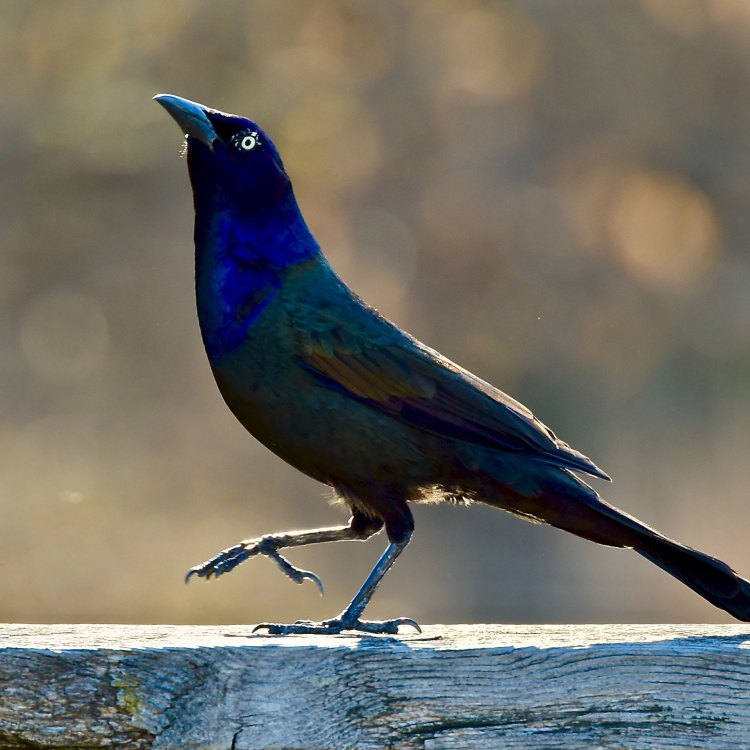
The Fascinating World of the Common Grackle: A Master of Adaptability
Disclaimer: The content provided is for informational purposes only. We cannot guarantee the accuracy of the information on this page 100%. All information provided here may change without prior notice.


